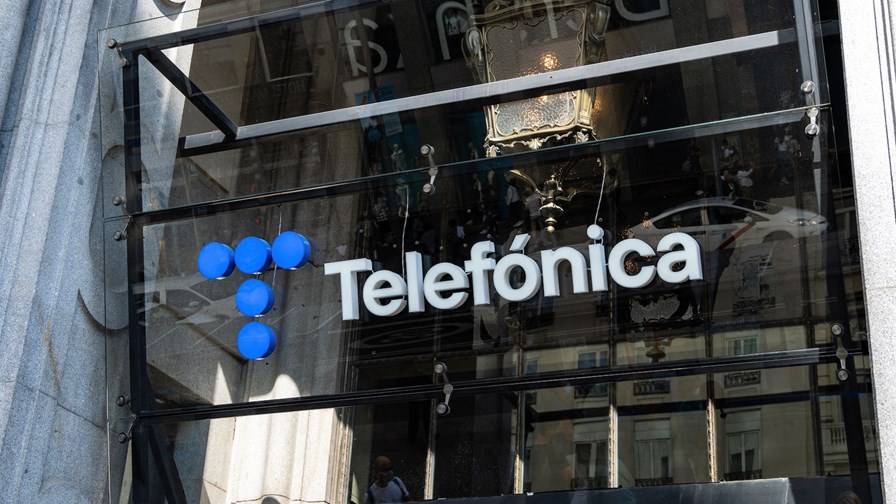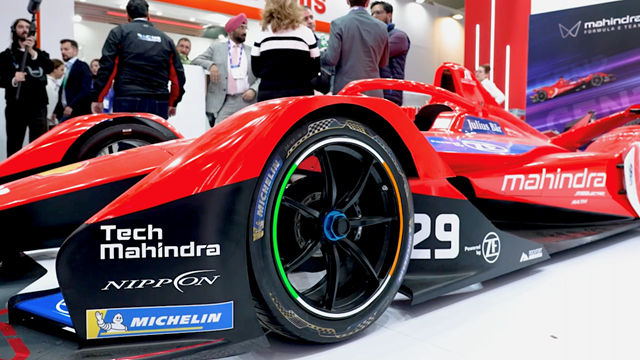
- Telefónica to reduce Spanish headcount by 20%
- Nokia gets Honor licensing deal over the line
- India’s new telecom law is passed
In today’s industry news roundup: Telefónica has struck a deal with unions that will result in a 20% headcount reduction in Spain; Nokia secures a significant patent licence deal with Chinese smartphone vendor Honor; India’s new telecom law is causing significant concern amongst lawyers and privacy groups; and much more!
As part of its strategy to cut operating costs and become a more flexible operation, Telefónica has reached a “collective agreement” with the Spanish trade unions to reduce its domestic workforce by 3,421 employees, reportedly about 20% of its staff in Spain, over the next three years. The redundancy plan will cost the telco €1.3bn and result in annual savings of €285m starting in 2025. The layoffs will begin this quarter: Staff aged 56 or older and with 15 years of employment at the operator can apply for voluntary redundancy, though some parts of the business will suffer enforced redundancies. The move follows the telco’s capital markets day presentations, during which chairman and CEO José María Álvarez-Pallete noted that Telefónica – one of the world’s largest operators, with almost 385 million connections across its European and Latin American markets and annual revenues of more than €40bn – is expecting an annual revenue growth rate of about 1% and earnings before interest, tax, depreciation and amortisation (EBITDA) growth of 2% for the 2023-26 period, and that the company wants to channel more of its earnings towards shareholders. To do that it needs to shrink costs and, while it is partly doing so by cutting its annual capital expenditure over the next few years (with its capex-to-revenues ratio dropping below 12% from about 14% currently), it also needs to reduce its operating expenditure (opex). Reducing the Spanish headcount by 16% will certainly help achieve that aim, though it’s believed the telco was aiming to make the cuts even deeper – reports emerged last month that Telefónica had proposed 5,100 layoffs to the unions, though it was noted at the time that the number was subject to negotiation.
Only days after Nokia said it would miss its 2023 financial targets because several major patent licensing deals had not been concluded before the end of last year, the Finnish vendor has announced that its Nokia Technologies division, which manages its intellectual property portfolio, has agreed “a new patent cross-licence agreement with Honor covering both parties’ fundamental inventions in 5G and other cellular technologies.” The financial details of the agreement are not being shared. Honor is the smartphone vendor that was spun out of giant Chinese telecom vendor Huawei Technologies in late 2020 and which, following significant growth in its domestic market – where it was the market leader in the third quarter of 2023 – and overseas, is now preparing for an IPO. Honor recently noted in an end-of-year message that its achievements in 2023 included becoming the market leader in foldable phones and registering 200% growth in its international sales. “Our European endeavours have seen promising progress, earning trust and recognition from partners such as Orange, Vodafone and Telefónica thanks to our products and user experiences,” the company noted, adding that it had become “the top Chinese smartphone brand” in the UK. “In other global markets including Italy, Spain, United Arab Emirates, Saudi Arabia, Malaysia, Peru and others, we have seen exponential growth, showing a clear indication of our brand’s growing global presence,” the company added, although it did not provide any device sale details. “Our vision for Europe is clear – to make it our second home market by bringing our best human-centric technology to more users, and earning unwavering trust through our innovative technology and experiences. We have made a long-term commitment to the European, LATAM, MEA, APAC, Eurasian and other markets,” the company added. And with this significant Nokia patent deal now agreed, it can focus on being an increasing thorn in the side of Samsung, Xiaomi, Transsion and even Apple. For Nokia, the conclusion of the deal with Honor is at least one shard of light in what has been a gloomy few months of negative news for the vendor – now it needs to pin down its patent licensing deals with Oppo (with which it has been engaged in a long legal tussle that looks to have some way to go) and Vivo, another Chinese smartphone vendor with which Nokia has been battling in the courts.
In the dying days of 2023, the Indian government passed a new telecom sector law – the Telecommunications Act, 2023 – that, it claims, will restructure and streamline the sector’s infamously bureaucratic regulatory system and make it easier to expedite the clearance of “blockages and bottlenecks” that can delay the rollout of new services and apps. Hitherto, telecom law in India was based on archaic legislation passed 138 years ago, back in 1885, by the colonial power, the British Raj. Until last month, India’s extant telecom law was embodied in the Wireless Telegraphy Act of 1933 (passed when India was still a British colony) and the Telegraph Wires (Unlawful Possession) Act of 1950, which was enacted after India gained independence in 1947. The need for new legislation has long been evident, but critics of it (and there are many) say it will allow the government to take control of services and gain untrammelled access to encrypted messaging simply by invoking undefined “reasons of national security.” Concerns are growing that the new Act will allow the government to impose the shutdown of telecom and internet services at whim and without independent judicial oversight of its actions. India remains the world’s largest democracy but, since 2012, successive governments have imposed the shut-off of the internet in excess of 800 times – more than any other country on the planet – and regardless of recommendations made by India’s Supreme Court and various parliamentary committees that such actions are an“ arbitrary exercise of power”. Furthermore, from now on, satellite spectrum will be allocated by the government via regulatory licences on a “non-auction” basis. And with regards to so-called ‘over-the-top’ (OTT) services (such as WhatsApp messaging and videoconferencing streams), the new Act appears to enable the Indian government to define them as telecom services in the future if it wishes to, as the wording of the Act is somewhat opaque, though telecom minister Ashwini Vaishnaw stated recently that OTT companies and applications won’t (at least for now) be covered under the new Act and will continue to be regulated by the IT Act of 2000. Although the new Act became national law in India on 24 December when it received presidential assent, its provisions will not be applied immediately but will instead dangle like the sword of Damocles above the heads of those who may be most affected by it. A government statement says, “It shall come into force on such date as the central government may, by notification in the Official Gazette, appoint and different dates may be appointed for different provisions of this Act shall be construed as a reference to the commencement of that provision.” Quite why this should be the case is not explained. India’s telcos have broadly welcomed the new legislation, saying that the restructuring of the regulatory framework and removal of ambiguity in areas such as spectrum allocation will attract more investment, both foreign and domestic. Elsewhere, lawyers and privacy groups opine that the new law is “a grave threat to fundamental democratic rights”.
Russian hackers had access to Ukrainian telecoms giant Kyivstar’s system since at least May 2023, ahead of a cyberattack made on 12 December that left around 24 million users without services for days, according to Ukraine’s cybersecurity chief cited by Reuters. Illia Vitiuk, head of the cybersecurity department at the Security Service of Ukraine (SBU), told Reuters that the attack had wiped “almost everything”, including thousands of virtual servers and PCs. According to SBU’s findings, the hackers would have been able to access personal information, identify the locations of phones, intercept text messages and perhaps steal messaging app accounts. Vitiuk has reportedly linked the cyberattack to Sandworm, a cyberwarfare unit of the Russian military intelligence service, the GRU. The report further cited Vitiuk as saying that the attack is a big warning not only for Ukraine but for the western world that “no one is actually untouchable”. Reuters also cited a Kyivstar spokesperson who confirmed the telco is working with the SBU to investigate the attack and mitigate future risks. Access to services was restored on 19 December last year.
Canadian internet service provider Xplore Inc has been looking to raise fresh funding of US$400m to improve its balance sheet and fund network expansion, Bloomberg has reported. The company – which refers to itself as “Canada’s fibre, 5G and satellite broadband company for rural living” – also plans to shuffle assets into different legal entities and to borrow against them, according to the news outlet, and is considering an option that would allow existing lenders to participate in the new financing.
South Korea is well positioned to be a global leader in graphene technologies. For years now, graphene – an allotrope of carbon comprising a single layer of atoms arranged in a hexagonal lattice nanostructure that is incredibly strong (200 times the strength of steel), flexible, light in weight (five times lighter than aluminium) and with high electrical resistance – has been touted as a wonder material with enormous potential application in many industrial sectors, including mass application in telecom and electronics. It has taken considerable time for the reality of graphene production and use to exceed the hype that has surrounded it for so long but, at last, the market is beginning to mature and the number of successful products and applications is growing. That’s according to a new report from IDTechEX, the Cambridge, UK-headquartered independent market and business intelligence research house, which positions South Korea as a likely leading player in the nascent global graphene market. The country is already home to many established and internationally renowned consumer electronics and high-tech companies, such as LG and Samsung, and, as the report’s author, Dr Conor O’Brien, IDTechEX's technology analyst points out, as part of their continuing development of devices, such as smartphones, video screens, cameras and batteries, much of their research and development (R&D) work has been focused on innovative materials, and manufacturing techniques, with much emphasis placed on graphene and applications. Samsung, in particular, has a long history of R&D experience with graphene and nanocarbons and is now partnering with a grouping of South Korean companies (many of which were founded by former Samsung employees) that are now external suppliers of the material. These include BestGraphene, which specialises in few-layer graphene (FLG) that has applications in new battery technologies, additives for semiconductor chip components, heat dissipation materials and composite materials; and KB Element, which produces FLG via a plasma-exfoliation process and is in partnership with Samsung and LG on the development of anti-static displays. Meanwhile, LG Chem has become a major force in the carbon nanotube market (CNT) and, significantly, has initiated a vertically integrated supply chain for CNTs in battery applications. Similarly, JEIO and Kumho Petrochemical have announced plans to expand capacity, with the bulk of sales for energy storage and batteries. And then there is Sixth Element, a South Korean company that is a global leader in the supply of graphene oxide (GO) and provides big Chinese companies, such as Huawei and ZTE, with the material for thermal management in consumer electronics. The report – Graphene Market & 2D Materials Assessment 2024-2034: Technologies, Markets, Players – provides a 10-year graphene market forecast and is the result of more than a decade of ongoing market research. IDTechEx launched the first version of the report on CNTs and graphene in 2011 and has been tracking the industries ever since.
The premium smartphone segment seems to be standing its ground and defying the bleak performance of the overall handset market. The latest findings from Counterpoint Research suggest that sales of premium smartphones (those with a wholesale price of $600 and above) are expected to grow 6% year on year globally in 2023, hitting a new record. With this, the segment is likely to capture nearly a quarter of global smartphone market sales and a total of 60% of all revenues in 2023. The premium handset device’s performance for the past year is in contrast with the drop projected for the overall global smartphone market in the period. “There has been a shift in consumer buying patterns in the smartphone market. Considering the importance a smartphone holds, consumers are willing to spend more to get a high-quality device that they can use for a longer period. Owning the latest and greatest flagships has also become a status symbol for many consumers, especially in emerging markets where they are jumping directly from the mid-price band to the premium band,” explained senior analyst Varun Mishra. Unsurprisingly, Apple remained the top smartphone vendor in the premium market, although its share has declined since 2022, largely because of “Huawei’s resurrection in China driven by the Mate 60 series”, as well as gains made by Samsung with its S23 and Foldable series. In terms of geographical breakdown, India is emerging as the fastest-growing premium market. According to Counterpoint Research, the premium segment is set to continue to outpace the global smartphone market, and winners will be the original equipment manufacturers (OEMs) that can differentiate themselves and build a strong brand. Find out more.
- The staff, TelecomTV
Email Newsletters
Sign up to receive TelecomTV's top news and videos, plus exclusive subscriber-only content direct to your inbox.




